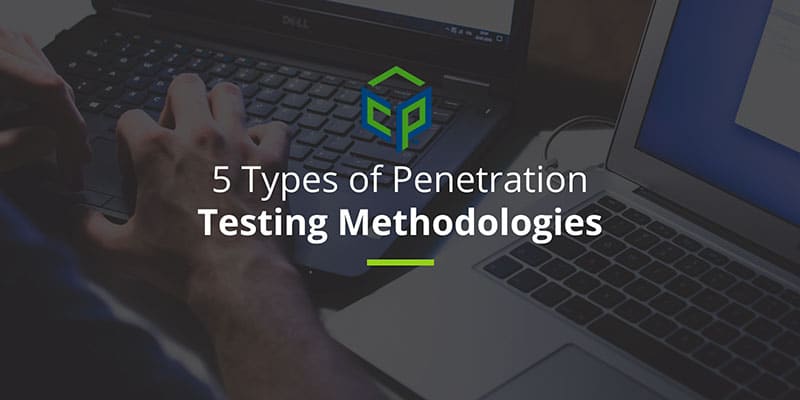
The only way to truly safeguard your business against attacks is to approach your network the same way cybercriminals would approach it: by trying to penetrate it. Choosing the optimal penetration testing methodology can help you identify the areas where your network is potentially vulnerable so you can then take the necessary steps to correct those vulnerabilities.
Penetration Testing Methodologies: What is Penetration Testing?
Before we get into the various penetration testing methodologies, let’s first establish what, exactly, penetration testing is and how it differs from other kinds of security audits.
| (If you’re already familiar with the different types of penetration testing and are exclusively interested in determining which penetration testing methodology is best for your situation, scroll down to the “5 Different Penetration Testing Methodologies” heading below). |
In short, penetration testing techniques work by orchestrating security attacks on your network. A pen test differs from a vulnerability assessment in that it goes beyond conducting an automated scan of vulnerabilities and actually involves the manual exploitation of identified vulnerabilities by network security experts.
In doing so, pen testers can determine the impact or damage that can be done by attackers that are able to gain access to your network.
Penetration Testing Methodologies: Types of Penetration Testing
Penetration testers conduct different types of tests for different platforms, which have been summarized below:
- Network penetration testing
Testing of the internal network, which may include attempting to bypass firewalls or IDS/IDPs or penetrate routers or internal applications.
- Web platform penetration testing
Testing of websites and cloud-based web applications to look for configuration flaws that might leave your externally-facing assets open to breaches. This will include both static and dynamic analysis of the applications.
- Wireless penetration testing
An important form of testing, as improperly secured wireless networks, are a major source of security issues for many companies. If it’s easy to gain access to a wireless network, it’s possible for hackers to use that attack vector to steal data or deliver malware.
- Social engineering penetration testing
Your network, devices, and applications shouldn’t comprise the only focus of your security testing. Human error accounts for a significant number of security breaches, with employees and other users often being susceptible to sharing sensitive information or passwords with stealthy hackers, which is why social engineering is such an important aspect to test.

Each of these different test types requires different focuses, which may be best satisfied by one or more of the following pen testing methodologies.
For each penetration testing methodology listed below, the experts that you work with to conduct the testing may take a black-box, gray-box or white-box approach.
- Black-box testing: The pentester is an outsider, much like the average hacker. No internal knowledge or access is granted.
- Gray-box testing: The penetration tester has user-level access to the system and possibly even employee-level authorization privileges.
- White-box testing: The pentester has full knowledge of and access to the target, including the source code, design and structure.
These different approaches strongly affect the outcome of a penetration test; one might use a black-box test to most closely simulate an authentic, real-world attack, while white-box tests are used to provide the greatest number of results that would also include internal risks.
| Want to Learn More About Protecting Your Network from Cyber Attacks? Check out these Blogs Today. |
Once you’ve established the type(s) of penetration testing and the various levels of access that can be granted to pentesters, it’s necessary to decide which penetration test methodology is best suited to your aims. Here, we’ve described the top five penetration testing methods with advice on how best to utilize each testing methodology.

The 5 Different Penetration Testing Methodologies
Each of the five penetration testing methodologies listed share common goals: to identify vulnerabilities, gain unauthorized access to the target, and compile a report on the findings. They differ, however, in how exactly they go about doing so, and may, therefore, be more or less applicable to your own business depending on your unique needs.
1. NIST
The NIST Special Publications 800 Series pentesting methodology offers some of the most specific guidelines for completing a pentest, from start to finish to review.
This framework was developed by the National Institute of Standards and Technology (NIST), an agency of the United States Department of Commerce, and compliance with this framework is therefore mandatory for many American businesses and their partners.
2. OWASP
The pen testing methodology developed by the Open Web Application Security Project (OWASP) is the benchmark for testing web applications. It’s useful not only for guiding pen tests but at the development stage, too.
Designed specifically for applications, IoT devices and APIs, the OWASP framework scans for both regular vulnerabilities and common design flaws. It includes separate guides for both pen testers and developers, as well as a code review and a document that describes the most common application vulnerabilities.
| Need Penetration Testing that will Expose ALL the Gaps in Your Network Security?
CP Cyber is the firm you need to call! |
3. OSSTMM
The Open Source Security Testing Methodology Manual (OSSTMM) is one of the most commonly used testing tools available. Developed by the Institute for Security and Open Methodologies (ISECOM), this popular pentest methodology offers comprehensive guidance for pen testers and allows them to tailor their testing to an organization’s particular demands.
As the name suggests, the OSSTMM has been peer-reviewed by top cybersecurity specialists, and can be used as a guide for IT teams to bolster the security of their own networks.
OSSTMM testing focuses on five key aspects, including:
- Human security
- Physical security
- Wireless security
- Telecommunications
- Data networks

4. ISSAF
The Information System Security Assessment Framework (ISSAF), created by the Open Information Systems Security Group (OISSG), is a particularly useful pentest methodology for companies that require an especially personalized approach to pentesting.
As with the aforementioned penetration testing methodologies, the ISSAF covers all stages of the pen test, from pretest to reporting.
This pentesting methodology lays out nine phases to follow:
- Information gathering
- Network mapping
- Vulnerability identification
- Penetration
- Gaining access and privilege escalation
- Enumerating further
- Compromising remote users/sites
- Maintaining access
- Covering the tracks
5. PTES
The Penetration Testing Execution Standard (PTES) framework offers guidance on all stages of the pentest.
This penetration test methodology includes seven sections that outline every aspect of penetration testing, from pre- to post-test, including:
- Pre-engagement interactions
- Intelligence gathering
- Threat modeling
- Vulnerability analysis
- Exploitation
- Post-exploitation
- Reporting
Next Steps Now that You Know About the Different Penetration Testing Methodologies
Testing your network, devices, applications, or websites for vulnerabilities and flaws is not only increasingly necessary for the protection of your company—it’s more than likely to be mandatory as per the regulations that govern your particular industry or region or those of your partners.
As important as the right choice of penetration testing methodologies may be, the most crucial decision that you’ll personally have to make before undertaking this common (but complex) process is the team of pen testers that you’ll work with.
By entrusting your testing to an experienced team to oversee your pen test, you can ensure that your company is a veritable fortress against the threat of cyber attacks, and—just as importantly—that testing is carried out without putting you at risk of any legal implications.
If you’re ready to get started on the process of safeguarding your network, devices or applications or want to discuss which pentesting methodology is best for your needs, get in touch to speak directly to one of our cybersecurity consultants today.

